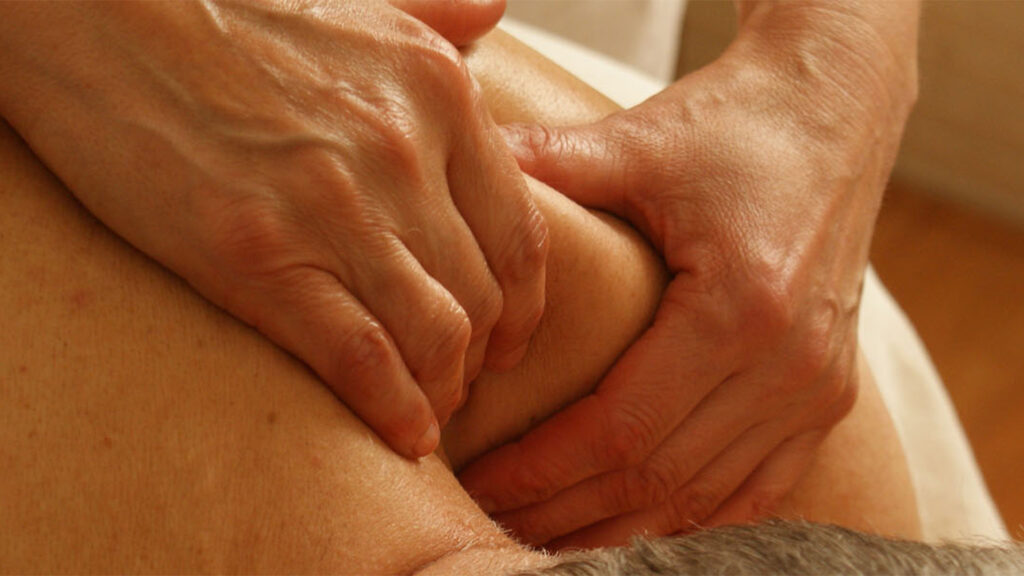Massage therapy is a powerful tool for improving your health and well-being. Not just a luxury, it offers significant benefits like stress reduction, pain relief, and enhanced mental health. In this article, you’ll discover the top advantages of massage therapy and how it fits into modern healthcare.
Key Takeaways
- Massage therapy provides significant health benefits, including stress reduction and pain relief, and is increasingly recognized as a valuable component of holistic healthcare.
- Various massage techniques, such as Swedish, deep tissue, and sports massage, target specific needs, allowing for tailored treatment plans based on individual patient requirements.
- Integrating massage therapy with other complementary therapies in multidisciplinary clinics enhances treatment outcomes and improves overall patient well-being.

Understanding Massage Therapy
Massage therapy is an age-old practice that involves pressing, rubbing, and manipulating the skin, muscles, tendons, and ligaments. This therapeutic massage is designed not just for relaxation but also for significant health benefits. The primary purposes of massage therapy include stress reduction and pain relief, making it a valuable tool in the realm of complementary therapies.
A common misconception is that massage therapy is merely a luxury reserved for spa days. However, it offers profound mental health benefits by reducing stress and promoting relaxation. Historically, the Greeks integrated massage into athletic training and recovery, with Hippocrates himself advocating its use for maintaining health. The Renaissance period reignited interest in the human body, leading to more scientific approaches to massage therapy. Across various cultures, massage therapy has served as a remedy, a form of social interaction, and a spiritual practice.
Modern therapeutic massage combines these historical techniques with contemporary medical knowledge, providing holistic health benefits. Today, it is an important tool for promoting both mental and physical health. It is increasingly offered alongside standard treatments for various medical conditions, highlighting its integration into mainstream medicine.
Registered massage therapists play a crucial role in delivering these massage therapy services, ensuring that each session is tailored to the individual’s needs by a massage therapist.
Types of Massage Techniques

Massage therapy encompasses a variety of techniques, each designed to address specific needs and enhance overall well-being. Swedish massage, characterized by long, soft strokes and rhythmic tapping, is known for relaxing muscles and energizing the body. This technique is often the go-to for those new to massage therapy services, offering a gentle yet effective approach to relaxation.
For those dealing with chronic tension or muscle injuries, deep-tissue massage is particularly beneficial. This technique targets the deeper layers of muscles and soft tissues, providing relief from persistent pain and aiding in muscle recovery. Sports massage, on the other hand, focuses on muscles used in specific sports, promoting flexibility and helping athletes recover from injuries.
Shiatsu massage employs rhythmic pressure at acupressure points to help restore the energy flow within the body. This technique is rooted in traditional Japanese therapy and is often used to balance the body’s energy. Chair massage is another popular option, performed while the client is seated and fully clothed, targeting the neck, shoulders, and back for quick and effective relief.
Hot stone massage incorporates warm stones to soothe and relax muscles, enhancing the overall massage experience. Reflexology, which involves applying pressure to specific points on the feet that correspond with different body parts, is another unique technique that offers extensive benefits. Each of these massage techniques provides distinct advantages, allowing massage therapists to tailor their approach to meet the diverse needs of their clients.
Popularity and Usage Statistics
The popularity of massage therapy has surged significantly over the years. In 2022, the usage of massage therapy more than doubled compared to 2002, with approximately 10.9% of U.S. adults utilizing these services. This increase reflects a growing recognition of the benefits that massage therapy can offer in enhancing overall quality of life and health.
The research underscores the significance of massage therapy in modern healthcare. Systematic reviews and clinical guidelines highlight the various health benefits, from stress reduction to pain relief and improved mental health. These findings support the integration of massage therapy into standard medical treatments, demonstrating its essential role in a comprehensive healthcare plan.
Pain Relief through Massage Therapy

Massage therapy is increasingly recognized as an important component of medical treatment plans, aiding in patient recovery and providing substantial pain relief. It can help alleviate a variety of conditions, including low-back pain, neck and shoulder pain, osteoarthritis pain in the knee, and headaches. Particularly beneficial after joint replacement surgery or injury, massage therapy assists in reducing pain and speeding up the healing process.
Studies have shown that massage therapy offers short-term pain relief for knee osteoarthritis and can significantly improve the quality of life for individuals undergoing cancer treatment by alleviating symptoms such as stress, pain, and nausea. For those with HIV/AIDS, massage enhances immune function, assists in pain relief, and promotes relaxation.
In 2023, a survey revealed that:
- 43% of individuals who used massage therapy did so as part of a treatment plan recommended by a healthcare provider.
- Systematic reviews and meta-analyses continue to support the effectiveness of massage therapy in managing chronic pain and aiding rehabilitation.
- Recent studies also highlight its benefits for treating symptoms associated with arthritis and fibromyalgia.
Integrating Services in Multidisciplinary Clinics
Integrating massage therapy with other complementary therapies in multidisciplinary clinics has proven highly beneficial for holistic health. These clinics often combine massage therapy services with chiropractic care, acupuncture, and naturopathy to provide comprehensive treatment plans. This approach not only addresses physical ailments but also promotes overall well-being.
In multidisciplinary clinics, massage therapists work alongside chiropractors, naturopaths, and acupuncturists to deliver well-rounded care. This collaboration ensures that patients receive the most effective treatments tailored to their specific needs. For instance, massage therapy can alleviate side effects from traditional cancer treatments and enhance overall well-being.
A comprehensive treatment strategy that includes massage therapy can effectively manage symptoms of fibromyalgia, providing patients with much-needed relief. Moreover, these clinics often offer direct insurance billing to numerous providers, making it easier for patients to access and afford integrated care, which may complement the standard treatment.
Research and Innovations
Research and innovations in massage therapy are continuously evolving, providing new insights and enhancing treatment outcomes. The Cochrane Database of Systematic Reviews, a collection of evidence-based reviews on healthcare interventions, offers valuable resources for understanding the efficacy of massage therapy. These summaries are available for free, making important findings accessible to both practitioners and patients.
Current research emphasizes the importance of including massage therapy in integrative care plans for cancer patients. Evidence-based research supports its role in alleviating symptoms and improving the quality of life for those undergoing cancer treatment. Integrating clinical trial evidence into massage therapy practices ensures that treatments are grounded in scientific research, enhancing their effectiveness.
In British Columbia, ongoing development and regulation of the massage therapy profession continue to provide resources and support for practitioners in health professions. This focus on research and innovation helps to ensure that clinical practice in massage therapy services remains at the forefront of integrative medicine, offering significant benefits to patients under the Health Professions Act.
Summary
Massage therapy is a versatile and powerful tool in promoting health and well-being. From its historical roots to modern applications, it offers a range of benefits, including stress reduction, pain relief, and enhanced mental health. The growing popularity and integration of massage therapy into multidisciplinary clinics highlight its essential role in comprehensive healthcare plans.
As research and innovations continue to evolve, the potential of massage therapy to improve quality of life becomes increasingly evident. Embrace the benefits of this ancient practice and consider incorporating it into your wellness routine. The journey to better health and well-being is just a massage away.
Frequently Asked Questions
What are the primary benefits of massage therapy?
The primary benefits of massage therapy are stress reduction, pain relief, and improved mental and physical health. These advantages contribute to overall well-being and promote a healthier lifestyle.
What types of massage techniques are available?
There are several types of massage techniques available, including Swedish, deep tissue, sports, Shiatsu, chair massage, hot stone, and reflexology. Each technique serves different therapeutic purposes and benefits.
How popular is massage therapy?
Massage therapy has seen significant growth in popularity, with about 10.9% of U.S. adults utilizing it in 2022, more than doubling since 2002. This trend indicates an increasing acceptance and recognition of its benefits.
Can massage therapy help with chronic pain conditions?
Massage therapy can indeed assist in managing chronic pain conditions like low-back pain, osteoarthritis, and fibromyalgia. Its effectiveness in alleviating discomfort has been widely recognized.
How is massage therapy integrated into multidisciplinary clinics?
Massage therapy is integrated into multidisciplinary clinics by collaborating with other therapies, such as chiropractic care and acupuncture, to deliver holistic and comprehensive patient care. This approach enhances treatment outcomes and promotes overall well-being.



